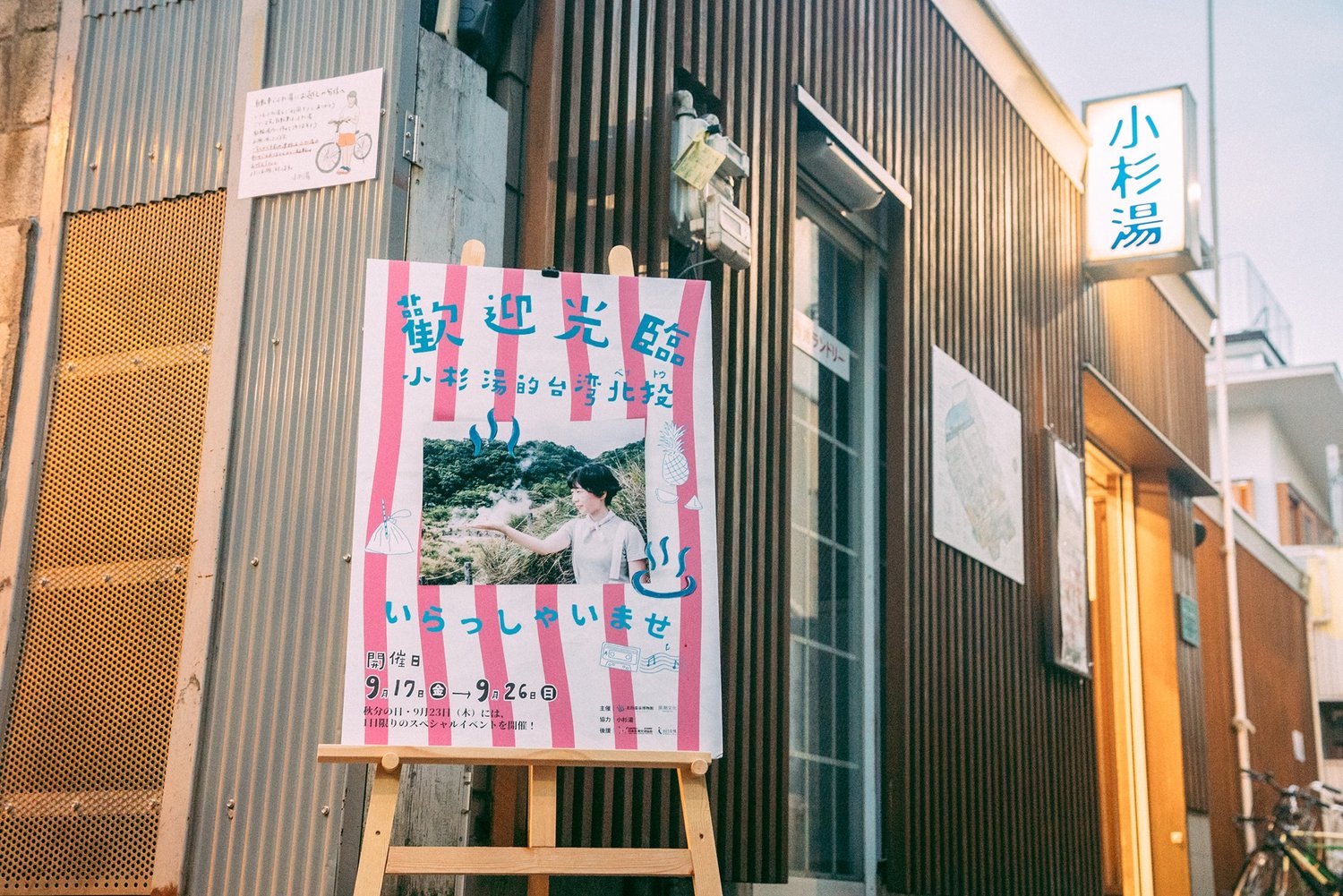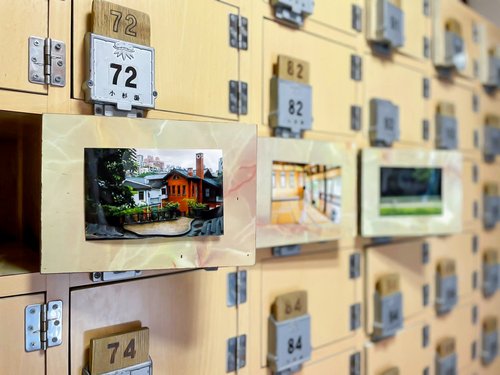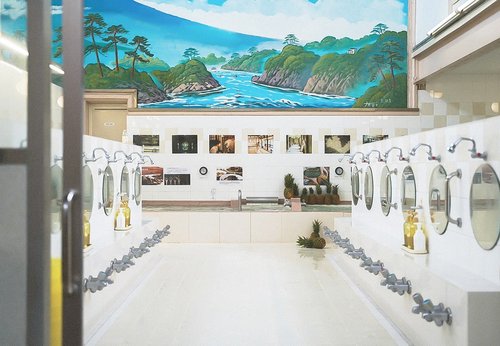The past, the present, and the future of the Beitou Hot Spring Museum
An Interview with Beitou Hot Spring Museum Curator Zhong Zhaojia
Text/郭慧
Dictation/鍾兆佳
Picture provided/北投溫泉博物館、小杉湯
Photography/剣持悠大、樹音
In 1913, the Beitou Public Bathhouse was completed and became the largest public hot spring bathhouse in East Asia at that time. However, as time passed, the once splendid public bathhouse has turned into a "ghost house" forgotten by the times. Fortunately, in 1995, a teacher from a Beitou elementary school led students on a field trip and accidentally discovered the history of the "ghost house". Thanks to the public's efforts, the Beitou Public Bathhouse was transformed into the current Beitou Hot Spring Museum. With its long history and local concern, how should the Beitou Hot Spring Museum review the past, stand in the present, and work together with the local community to jointly shape the future of Beitou? Perhaps the curator of the Beitou Hot Spring Museum, Ms. Zhong Zhaojia, is the most ideal person to answer these pertinent questions.
Q: In 1998, the Beitou Hot Spring Museum was established as the first museum in Taiwan to be revived and made possible by local people. As a local public museum, how does the Beitou Hot Spring Museum inherit its heritage and take a modern approach given the numerous museums in this era?
A: The Beitou Hot Spring Museum differs most from other cultural museums in that it was formerly known as the Beitou Public Bathhouse. Therefore, the Beitou Hot Spring Museum not only bears witness to the history of the "hot spring township" but also participates itself in the development of the hot spring industry in Beitou. This sort of connection to the local community is what makes the Beitou Hot Spring Museum unique.
Therefore, unlike many cultural museums where the elites put together their knowledge and then tell people "what you should learn" and "what are the classics", we want to position the museum as an "ecological museum" and a "museum without walls" at the beginning, paying attention to local life and the pulse of the industry, emphasizing on working with the local community to write about Beitou. In fact, our focus on history and the present is to envision the future together with the local community, or to create "history" for the "future" of Beitou. What we really care about is the concept of continuity from the past, to the present, to the future, rather than repeatedly emphasizing the classics.
What got us thinking this way is that the Beitou Hot Spring Museum was once a very dilapidated place with a small collection. After all, very few people took photos while bathing, so photos of the interior of the Beitou public baths are very sporadic. However, just because we had a hard time growing up, it is all the more important for us to record history together. Perhaps our efforts might prevent future generations from facing the same problems we are facing now a century from now. Since we met a lot of difficulties in the past and received a lot of help, the spirit of "communion" has always been our core. Interestingly, the concept of "communion" also echoes the history of the public baths in Beitou, which is a place where all bathers, regardless of age, nationality, or language, can visit.
Beitou is a very interesting place. Many residents say "I am from Beitou", but some of them whose hometowns are not from Beitou at all, but after moving here, they strongly identify with the place. Under such circumstances, we came to reflect on the questions, "What is the history of Beitou?" and "What identity do the people of Beitou cherish?" Later we found that as long as you identify with Beitou, you are a Beitouer. This concept of inclusion is also similar to that of the public baths. To me, the Beitou Hot Spring Museum will not be the largest, longest-running, and most resourceful museum. That is not the way we should go. To become the most special "only" in the minds of local people is the direction that the Beitou Hot Spring Museum should take.

(Picture provided:北投溫泉博物館)
Q: How does the Beitou Hot Spring Museum strike a balance between heritage and innovation?
A: We value the past, the present and the future. But when "history" comes to a certain stage, it must face the challenges of the new generation. Therefore, what we need to do "now" is to "innovate", and this innovation is to write a longer-term "future". For the Beitou Hot Spring Museum, it is to inherit the history, set eyes on the present, and envisage the future. It is our mission to use the concept of public baths, to work with different people, and to embrace diverse issues.
As for how to manage the balance between heritage and innovation, I think the key is to think about whether these historical events will help in the future. And how can we create value through culture to boost local industries or culture? For example, there is a serious difference between the low and high seasons in the development of the tourism industry in Beitou. People only visit Beitou during the winter bathing season, which is not a good thing for the local development, so we hope to change the scenario through various activities. However, Beitou is a small town with trails everywhere, so bus tours may not be the best idea for the development of Beitou. How to keep the overall interests of Beitou, so that it will always be a healing hot spring township, a place full of human touch, and bring visitors a different experience without harming the environment? These are the things we always think about when we organize events.



(Picture provided:北投溫泉博物館)
Q: How does the Beitou Hot Spring Museum strike a balance between heritage and innovation?
A: We value the past, the present and the future. But when "history" comes to a certain stage, it must face the challenges of the new generation. Therefore, what we need to do "now" is to "innovate", and this innovation is to write a longer-term "future". For the Beitou Hot Spring Museum, it is to inherit the history, set eyes on the present, and envisage the future. It is our mission to use the concept of public baths, to work with different people, and to embrace diverse issues.
As for how to manage the balance between heritage and innovation, I think the key is to think about whether these historical events will help in the future. And how can we create value through culture to boost local industries or culture? For example, there is a serious difference between the low and high seasons in the development of the tourism industry in Beitou. People only visit Beitou during the winter bathing season, which is not a good thing for the local development, so we hope to change the scenario through various activities. However, Beitou is a small town with trails everywhere, so bus tours may not be the best idea for the development of Beitou. How to keep the overall interests of Beitou, so that it will always be a healing hot spring township, a place full of human touch, and bring visitors a different experience without harming the environment? These are the things we always think about when we organize events.



(Picture provided:北投溫泉博物館)
Q: Both "public baths" and "museums" involve "publicness". What kind of cooperation and interaction do you expect between the Beitou Hot Spring Museum and the local community?
A: I think the concept of "public baths" is very broad. In the past, what people thought about public baths was often limited to the concept of "bathing". But in fact, the bathers and the architecture as well as the art works in the public baths are very precious. Its public nature is also fascinating, and this is the part that we repeatedly emphasize when we plan the events.
In my opinion, the public baths have clear public nature on the two levels: "space" and "memory". If we look at it from the perspective of "space", we will think about what can be done with the bathing pool in a public bathhouse when it is no longer available for people to take a bath. How can we keep the core spirit of the space, so that we can continue to keep the memory of this place, and let people know that the Beitou public bath belongs to everyone? With this in mind, the Beitou Hot Spring Museum has placed installation art and water screen at the large bath. In cooperation with the Taiwan Yueqin Folk Music Association, the museum has also placed one hundred yueqins in the museum, echoing the 100-year history of the Beitou public baths.
As for the "memory" part, it is the most difficult to deal with. After all, everyone's memory of the same place is different. So our task is how to find the common imagination in our different memories. And in this process, communication is very important. For example, a couple of years ago, young people felt that Beitou was an old town, but we used the exhibition to tell them that "it's not what you think". In the past, young people thought that the yueqin was outdated, but through the efforts of the Taiwan Yueqin Folk Music Association and the public events at the Beitou Hot Spring Museum, we managed to let young people get to know, understand and have fun with the yueqin masters in the same space.
Interestingly, we used to talk about "internationalization", but now we emphasize "the more local, the more international". In fact, we have been emphasizing local publicness and trying to find the possibility of innovation continuously. There are many places in Beitou that could be innovated with many treasures.
The key point is how to connect and integrate them to compile a story that can be easily remembered. We also hope that with the feedback from the participants of the events, those who are working hard to promote the issue will be empowered to continue on.After all, if no one keeps up the push, the place will fade away. For an eco-museum, the most important thing is not the objects lying around, but the willingness of people to continue to tell the story of the place.





(Picture provided:北投溫泉博物館)
(Picture provided:北投溫泉博物館、Designed by 鄭培哲)
Q: Beitou is a famous hot spring town in Taiwan. It is also a tourist attraction for many foreign visitors to Taiwan. What role do you think the Beitou Hot Spring Museum should play in international exchange?
A: The Beitou Hot Spring Museum used to be like a "abandoned baby", but it has grown up slowly under the care of everyone. To me, it is now on the verge of adulthood. We have received a lot of help from people in the past. We continue to think about how to give back to the local community and how to use innovative methods to bring Beitou to the international stage.
Actually, it is a new attempt for us to co-host "Welcome to Beitou, Taiwan, by Kosugiyu " with Kosugiyu from Japan. In the past, the Beitou Hot Spring Museum has often received foreign visitors and exchanged ideas with other museums, but this is the first and most in-depth cross-cultural exchange with the bath culture as the core. Before that, we focused more on local efforts. However, these efforts helped us to be confident to face the new challenges. After all, the Beitou Hot Spring Museum has changed from a "ghost house" in the past to a place where local residents come to walk and people from all over Taiwan come to go around. In fact, we have come a long way and have established our own "model". Next, we can share our successful model with our neighboring museums, while we need to take the next step forward ourselves.
We will also find that when foreigners first get to know Taiwan, they must start from the most superficial side. Our task is to start from that side and guide them down the road. In fact, many things look stereotypical, but they are actually a door for people to get to know us, and our task is to pave the way behind the door once they step through it.




(Picture provided:小杉湯、Photography:剣持悠大、樹音)
Q:What are the future plans of the Beitou Hot Spring Museum that you can share with us?
A: The next step for us is to keep accumulating. I think "public baths", "hot spring township", "healing" and "inclusion" are all very broad concepts. With such a concept, there are many things that can be done, and it is worth to keep trying and accumulating. For example, this overseas exchange with Kosugiyu_sento in Japan is also a path that we can continue to try in the future.


(Picture provided:北投溫泉博物館)
PLUS! /Create new possibilities for Beitou's future through exchanges with Taiwan and Japanese Baths
In September 2021, a Taiwan-Japan exhibition entitled "Welcome to Beitou, Taiwan, by Kosugiyu " was opened at the popular Kosugiyu_sento in the Koenji area of Tokyo. This is not only a rare cross-country exchange in the midst of the pandemic, but also the first time that Yusuke Hiramatsu, the third-generation owner of Kosugiyu, learned that "there is a bath culture in Beitou!” It was also the first time that the Beitou Hot Spring Museum initiated a cross-sea dialogue with bathing culture as its core.
Speaking of the inception of this collaboration, the curator of the Beitou Hot Spring Museum, Ms Zhong Zhaojia, said that the Beitou Hot Spring Museum, a publicly owned cultural institution, and the Kosugiyu_sento in Tokyo, a private family-owned bathhouse, have something in common in that both were once public baths for the general public. They both faced the challenges of the times and had to struggle to survive despite the aging buildings or the decline of the sento culture so as to find their own value in the new era.
"When we chose our partner, we knew in our hearts that we could get a lot of resources if we worked with other hot spring towns. But we wanted to work with Kosugiyu because we both had faced historical challenges," said Zhong. "In this process, we also learned a lot from the story about Kosugiyu, such as how the small hot springs can use their resources and venues to develop various possibilities. I think this spirit can also encourage the hot spring operators in Beitou to know what they can do when they have to face the challenges of the times. When a bathhouse is facing a difficult situation, how can they cooperate with local people from all walks of life to create new possibilities? The way of dealing with challenges is different for everyone, and no one can copy the path of others, but as long as we see successful cases, we know that we can also make it possible.”
The successful case of Kosugiyu_sento brought new inspiration to the development of the hot spring industry in Beitou. Another important aspect of this exhibition is to let more Japanese friends know more about Taiwan. Through the eyes of foreigners, we could get to know ourselves again and learn how to tell our own stories. For example, "Welcome to Beitou, Taiwan, by Kosugiyu " displayed postcards, hot spring flowers(湯の花), and soap from Beitou, helping Japanese "sento lovers" to get to know the story of Beitou through these small local items. "In fact, hot spring flower is a kind of white powder made from crystallized hot spring water with a special process. It can be used for taking a sento and is also a product of recycling economy. The local industry has been making such good products in Beitou, but they are not very good at telling the stories behind them. So we took the opportunity of the exhibition to use our storytelling skills to make hot spring flowers an important souvenir from Beitou, and to create a cultural value for the local industry," said Zhong Zhaojia, the curator.
Besides the exchange, Zhong said that through this joint exhibition, we see how others see us from the perspective of our Japanese friends. "There will always be blind spots when we regard ourselves, but through the eyes of others, we will find that many things that we think are ordinary may be treasures in the eyes of others. For example, Japanese friends are very interested in the local market in Beitou, or in very common objects. When we discover through the eyes of others that the things we take for granted actually hold new possibilities, we will add new impetus to the sustainability of cultural interpretation. This will enable us to build on the past and create the future of Beitou from a modern perspective.




(Picture provided:小杉湯、Photography:剣持悠大、樹音)



(Picture provided:北投溫泉博物館)
